by Amineddoleh & Associates LLC | May 2, 2022 |

The Marble Bust found in Texas that will be returned to Germany
Amineddoleh & Associates is proud to announce its role in a recent antiquities matter, whereby a Roman marble bust looted during WWII will be restituted to the Bavarian government in Germany. Below, we share details about the bust’s provenance, examples of other cultural objects looted during World War II, the vital work by experts in establishing provenance, and our role in this important cultural return.
I. HISTORY OF THEFT DURING WWII
Much of the literature about WWII-era looted art focuses on thefts perpetrated by the Nazi Party. The Nazis pillaged on a continental scale – appropriating about 20% of all art in Europe at the time. They were notorious for confiscating artworks they deemed “degenerate,” although other works of art were also swept up in their violent mass seizures. One example is the extensive Czartoryski family collection from Poland, which included Lady with an Ermine by Leonardo da Vinci (later recovered) and a portrait of a young man by Raphael (still missing). After the occupation of Paris in 1940, over 20,000 looted works were taken to the Jeu de Paume gallery, and were kept in a place known as “The Room of the Martyrs.” While Hitler and high-ranking officials had first pick of the loot, German officers could later select masterpieces of their choice. The remainder were slated for destruction, but some evaded this fate thanks to the efforts of art historians and the famed Monuments Men (this title is a misnomer, as this group of British and American members included women).
Looting is often a crime of opportunity, and soldiers on all sides of a conflict may take advantage of the situation by partaking in the appropriation of stolen valuables. Allied soldiers during WWII were no exception. Some of the goods pilfered by Allied troops, like cigarettes and household goods, are relatively inexpensive or nearly worthless by today’s standards. But others – including paintings, rare coins, historic photos, musical instruments, and antiquities – possess great artistic and cultural value. Those valuables continue to be found to this day, sometimes in surprising locations. Some have been returned to the heirs of the original owners while others are involved in ongoing litigation.
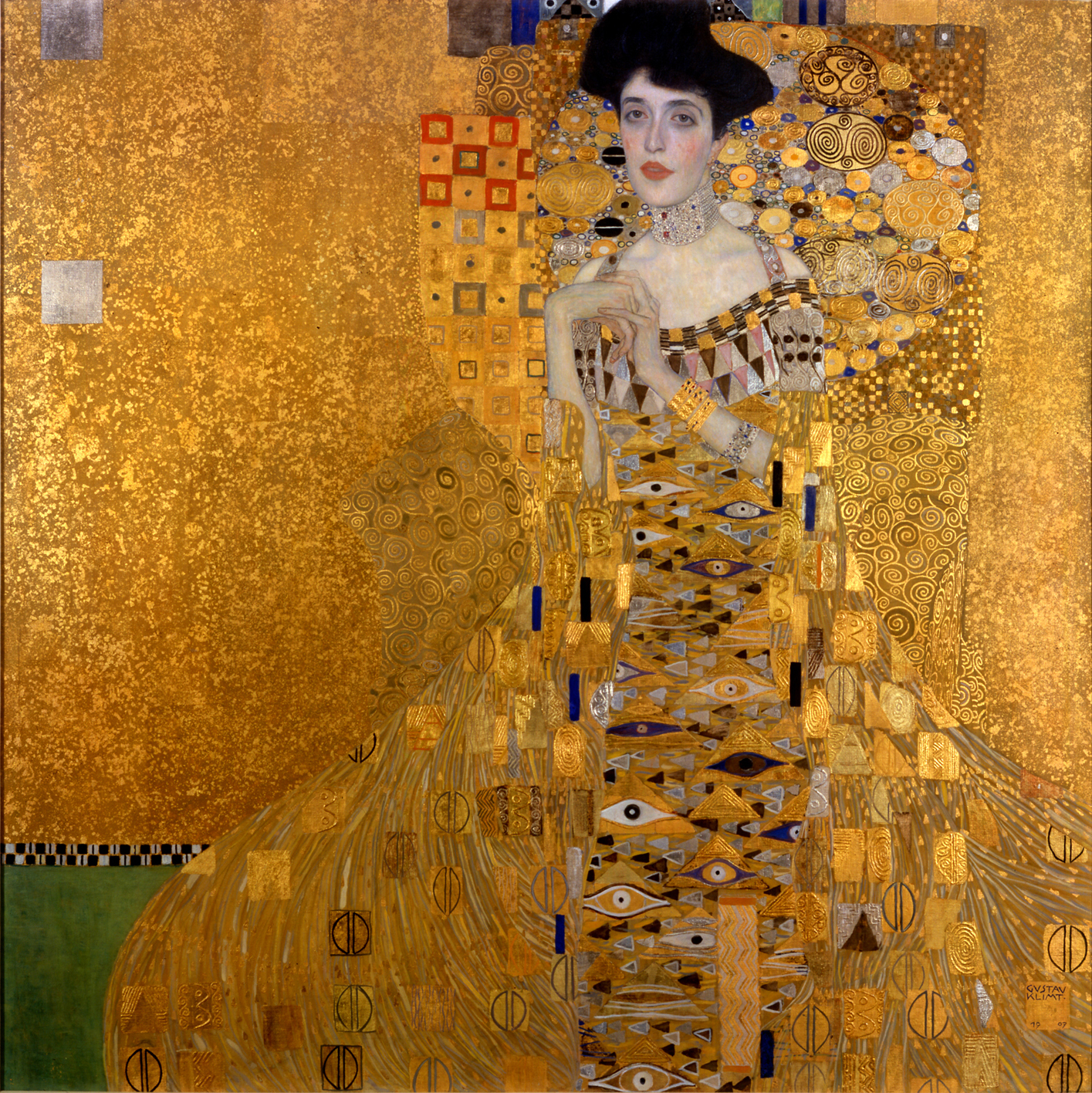
Gustav Klimt’s Portrait of Adele Bloch-Bauer
In one instance, a member of the U.S. Army stole a collection of medieval religious objects that had been hidden in a cave for safekeeping during the war. The soldier mailed these priceless artifacts home to his family in Texas. These items, known as the Quedlinburg Treasure, included a jeweled 9th-century manuscript written entirely in gold (the Samuhel Gospel). Decades later, the soldier’s heirs reached an agreement with Germany and returned the items in exchange for $2.75 million. Another case involved a pair of portraits by Albrecht Dürer stolen from a museum in East Germany during the war. These were taken by an American serviceman and later bought by a New York collector, Edward Elicofon, for $450. Although Elicofon was purportedly unaware of the paintings’ provenance, a friend recognized the works from a book on art stolen during WWII. After the museum filed a lawsuit in New York, the court compelled Elicofon to transfer ownership and possession of the works back to Kunstsammlungen zu Weimar (Weimar Art Collection).
Perhaps the best-known case involves Gustav Klimt’s Portrait of Adele Bloch-Bauer, known as the Woman in Gold. This gilded painting was forcibly seized by the Nazis after the owners, a Jewish family, were forced to flee Austria in fear of their lives. The portrait is called “the Mona Lisa of Austria.” Along with other works from the Bloch-Bauer’s collection, the portrait wound up in the Austrian State Gallery, but the heirs to the estate fought to recover their family’s lost property. Eventually, after litigation in the U.S. and arbitration in Austria, the Bloch-Bauer heirs succeeded. The dramatic tale became the subject of a film starring Helen Mirren as the main claimant, Maria Altmann, and the painting was later sold in 2006 for $135 million – a record price at the time.
II. AN ART LOVER DISCOVERS THE MARBLE BUST
Not all art and heritage restitutions involve contentious battles. The most recent example of a voluntary return of valuable WWII-looted art can be found in the just-announced agreement between Germany and our client, Laura Young.

The Marble Bust safely strapped in Ms. Young’s car with a seatbelt
Ms. Young happened upon the Marble Bust in the unlikeliest of places: a goodwill thrift shop near her home in Austin, Texas. She purchased the artifact and immediately realized it was more than it appeared to be. The 52-pound Marble Bust, standing at 19 inches tall, was in fact an extremely valuable antiquity. After she drove the Marble Bust home (responsibly strapped into her car with a seatbelt), Ms. Young began digging into its past and discovered the remarkable nature of her find.
Ms. Young later confirmed that, unbeknownst to the goodwill thrift shop owner, the Marble Bust depicts famed Roman commander Nero Claudius Drusus Germanicus, known simply as Drusus Germanicus or Drusus the Elder. She went on to discover that the Marble Bust has a significant provenance, including links to royalty.
The Marble Bust’s Provenance
- A Roman Marble Portrait Head of Drusus Germanicus (early 1st century AD)
- Acquired by King Ludwig I of Bavaria (before 1833)
- Exhibited in the Pompejanum, Aschaffenburg, Germany (presumably by 1848)
- Stolen during WWII (1944 or 1945)
- Consigned to a goodwill shop in Austin, Texas (Unknown date)
- Purchased by Laura Young (2018)
- Title transferred to Bayerische Verwaltung der staatlichen Schlösser, Gärten und Seen (the Bavarian Administration of State-Owned Palaces, Gardens and Lakes) (2021)
- Loan to the San Antonio Museum of Art (2022-2023)
A Bit of Roman History
To truly appreciate the richness of the Marble Bust’s provenance, a bit of history is required.
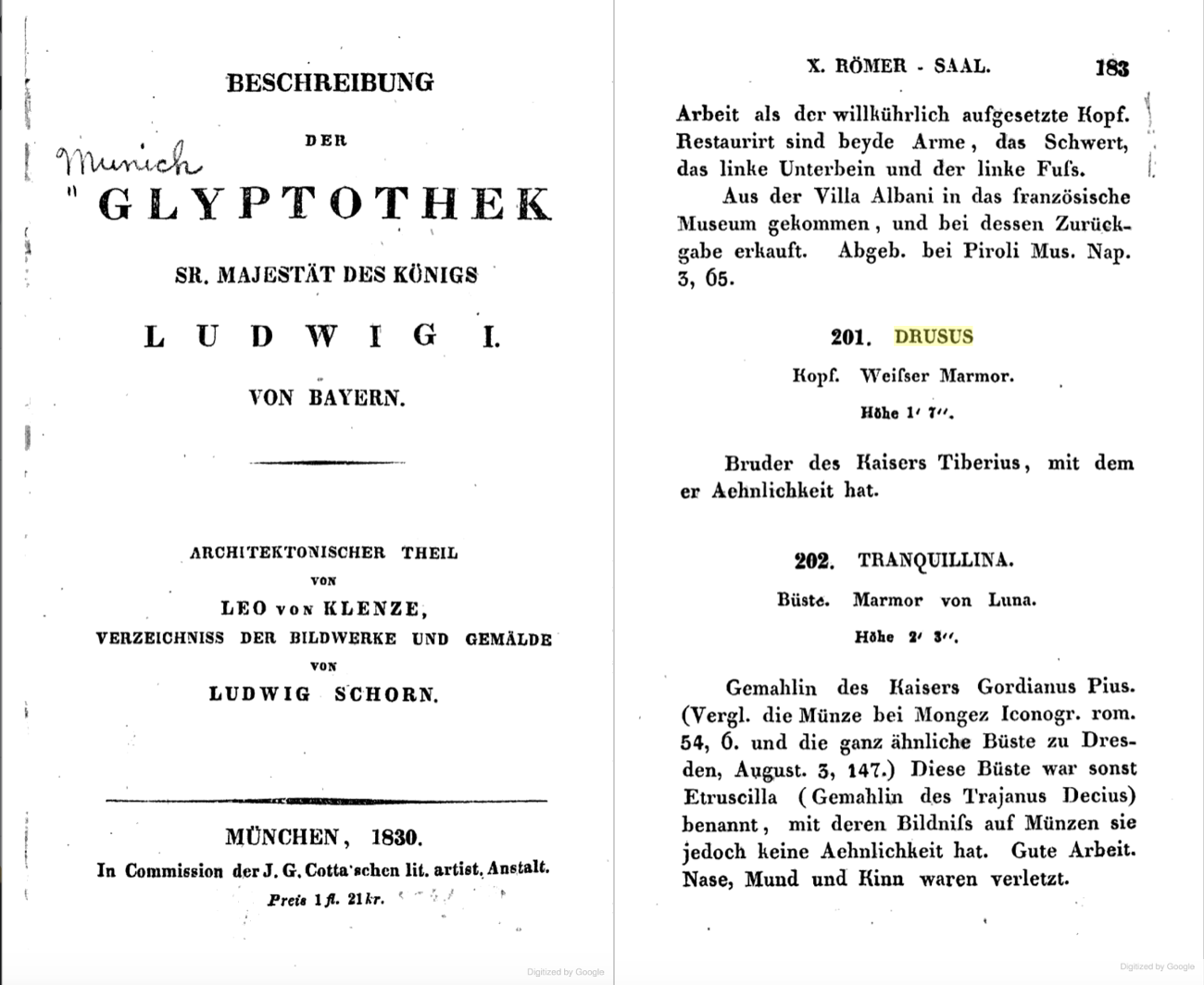
Left, cover of 1833 catalog of King Ludwig I’s antiquities collection , right, description of Drusus (the Marble Head) listed in the catalog
Image from google books digitized version of the catalog
Born on January 14, 38 B.C. to Livia Drusilla and Tiberius Claudius Nero, Drusus Germanicus was the legal stepson of Livia’s second husband, Octavian (later Emperor Augustus and great-nephew of Julius Caesar). Drusus was born shortly after his mother’s divorce, and his mother immediately married Octavian, who historians suspect was Drusus’ true father. Drusus Germanicus eventually became the commander of the Roman forces occupying the German territory between the Rhine and Elbe Rivers. In 9 B.C., Drusus reached the Elbe River, but he was thrown from his horse and died 30 days later from the injuries he sustained. For his conquest of Germania, he received the posthumous honorific title “Germanicus.” The Marble Bust of Drusus Germanicus traveled to Germany nearly two millennia later after its acquisition by the King of Bavaria, Ludwig I, at some point prior to 1833.
Although Drusus was lesser known than some other members of his family, portrait heads of this figure are rare (perhaps due to Drusus’ early death) and highly prized.
Ludwig I and the Pompejanum
After its acquisition by Ludwig I, the Marble Bust was transferred to a most fitting location – the Pompejanum. The Pompejanum (or Pompeiianum) is a replica of a Roman townhouse in Pompeii. Overlooking the Main River in the Bavarian town of Aschaffenburg, the museum was already a popular tourist destination in the 19th century. The Pompejanum was commissioned by Ludwig I, who was inspired, like many cultural enthusiasts, by the excavations at Pompeii.
Ludwig I was both an art lover and a great patron of the arts. During his reign from 1825 through 1848, he commissioned major museums and art projects throughout Bavaria and the rest of Germany in a bid to elevate Munich to the status of rival European art capitals, like Rome and Paris.
His passion for art was first awakened on a trip to Italy from 1804 to 1805. After that trip, the future king became a voracious collector. Much like today’s collectors, he sent agents across Europe to acquire masterpieces. (One of his art dealers, Johann Martin von Wagner, was noted for his unerring eye, scholarly talent, and great commercial aptitude.) With an unlimited amount of money to draw on from his royal coffers, Ludwig I scooped up many highly sought-after pieces. To display his massive collection, Ludwig I commissioned the construction of a number of major museums. One of his first projects was the Glyptothek, which was used to house ancient sculptures. Another, the Staatliche Antikensammlungen (State Collections of Antiquities), was designed in 1848. The works from that institution formed part of the extensive collection of the Bavarian Royal Family.
Ludwig I’s taste in art also ventured beyond the ancient world. In 1836, he created the Alte Pinakothek, the largest museum in the world at the time of its inauguration. Ahead of his time, Ludwig I also established one of the first contemporary art museums in the world–which was unfortunately destroyed by bombing during WWII.
Ludwig I had a deep appreciation for ancient masterpieces and structures evoking the classical era. Projects inspired by this passion include the Propylaea, a monumental city gate constructed as a copy of the Athenian Acropolis and ultimately dedicated as a memorial for Ludwig I’s son Otto, who ascended to the throne of Greece in 1832. It was financed by Ludwig I’s private resources after his abdication, and serves as a symbol of friendship between Greece and Bavaria. While he was still a young crown prince, Ludwig I conceived the project of Walhalla, a temple erected to honor famous Germans. This hall of fame honors nearly 200 laudable people spanning 2,000 years of German history, including both male and female politicians, sovereigns, scientists, and artists, from Albrecht Dürer to Sophie Scholl. Although it is named after the Norse mythological heaven for warriors, the temple was built in the Greek Revival Style and modeled after the Parthenon. The temple continues to be used today, and 19 busts, including one of Albert Einstein, have been added to the collection since WWII.
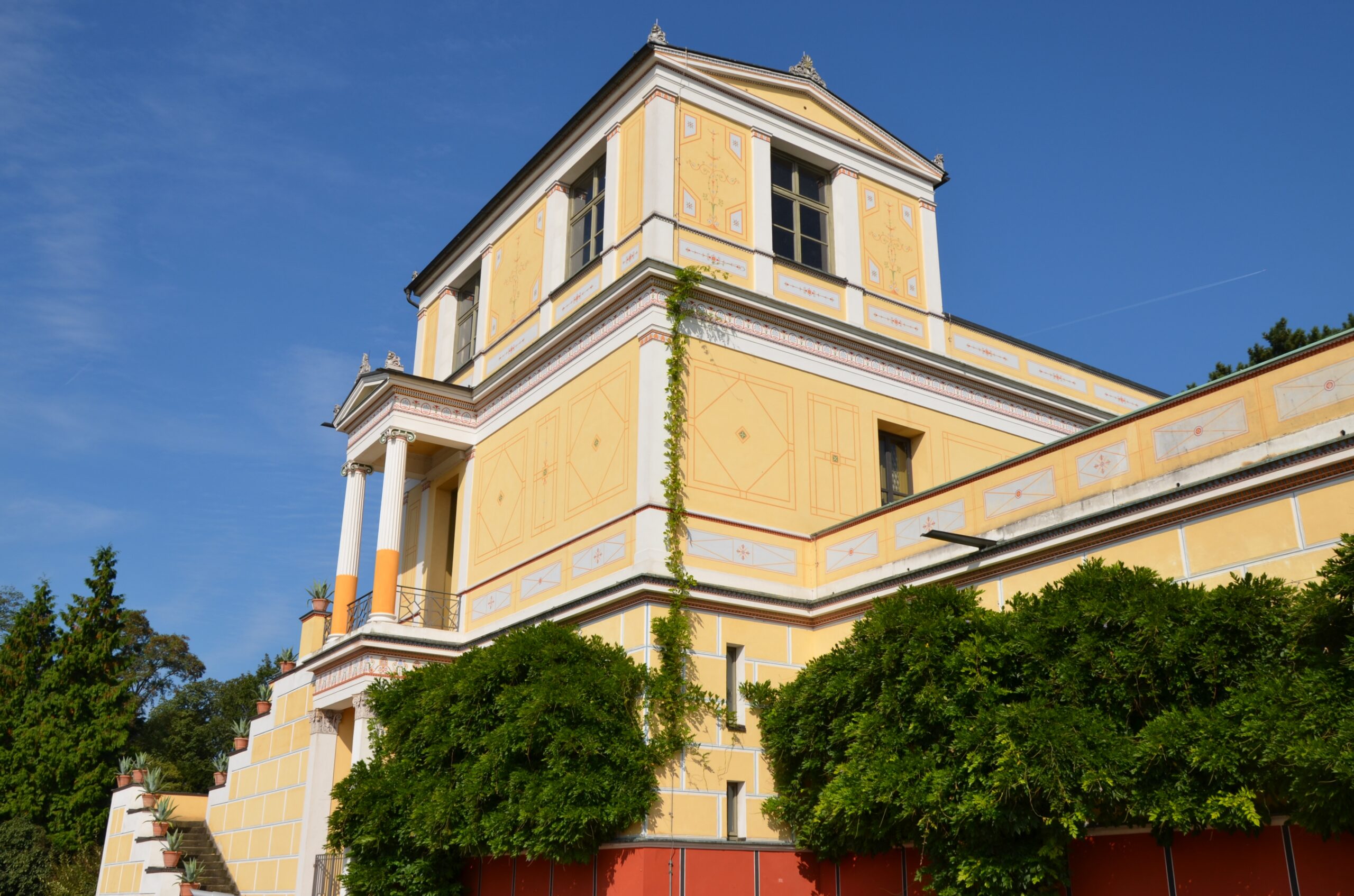
Pompejanum in Aschaffenburg, Germany, as restored today
© Carole Raddato (owner of Following Hadrian)
Ludwig I also aspired to bring a bit of ancient Rome to Bavaria. As such, he commissioned the Pompejanum, mentioned above, which was constructed between 1840-1848. Designed by architect Friedrich von Gärtner, it was loosely modeled on the House of the Diosuri (Casa dei Dioscuri) in Pompeii. The villa was never intended to be used as a residence; rather, it has always served as a museum. Located near Schloss Johannisburg (one of Ludwig I’s residences), the king could admire it from his window and make frequent visits. Completed with a Mediterranean-style garden and filled with reproductions of mosaics, architectural forms, and artifacts, the king could escape to Italy with just a short trip to the Pompejanum.
Visitors came to the Pompejanum because it was, and perhaps still is, the most accurate reconstruction of a Roman villa in the world. The ground floor features an entrance hall, the guest room, the kitchen, the dining room, and atrium, all organized around two courtyards. The interiors were painted in the Pompeiian fresco style, and the floors feature copies or adaptations of ancient works and Roman mosaics. The collection included Roman marble sculptures, bronze statuettes and glasses, and household items, as well as two god’s thrones made of marble.
Destruction of the Pompejanum
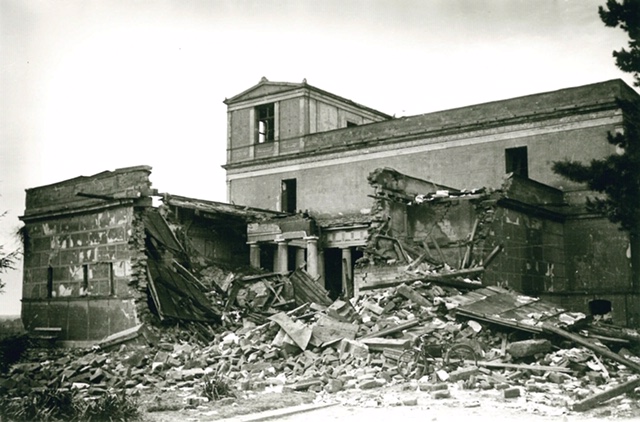
The Pompejanum destroyed after WWII bombings
Sadly, as often happens during conflict, the damage to the museum’s physical structure led to the loss of its collection. The Pompejanum and the surrounding areas were heavily damaged by Allied bombing in 1944 and 1945. Some of the museum’s objects survived bombing only to be looted. But nothing looted from the museum was ever sold by the museum or German government, and thus title to any looted property remained with the Bavarian State. Under U.S. common law principles, valid title to artwork cannot be transferred through looting. There must be a legitimate transaction for title to vest legally in a subsequent purchaser. This means that the Bavarian State continues to maintain a legal claim of ownership over objects that were taken from the Pompejanum.
The Pompejanum Today
The Pompejanum was eventually restored during several phases, the first beginning in 1960. The restoration was completed in 1994, and the villa reopened to visitors that year as the museum of the Bavarian Palace Department and the State Antiquities Collections. Today, it is open to visitors from the spring through the fall.
III. AN ART EXPERT ILLUMINATES THE MARBLE BUST’S PROVENANCE
Establishing the provenance of artwork and antiquities is essential, particularly for objects displaced during times of conflict. It is important not to underestimate the role of art experts in determining provenance, as well as the return and restitution of looted objects. Due to their specialized knowledge and access to resources that are not necessarily available to the public, art experts play a crucial role in establishing the provenance of works and alerting owners to potential red flags. It is always important for purchasers of artwork with unclear provenance or gaps in the chain of ownership to consult experts and ensure that title has been properly transferred.
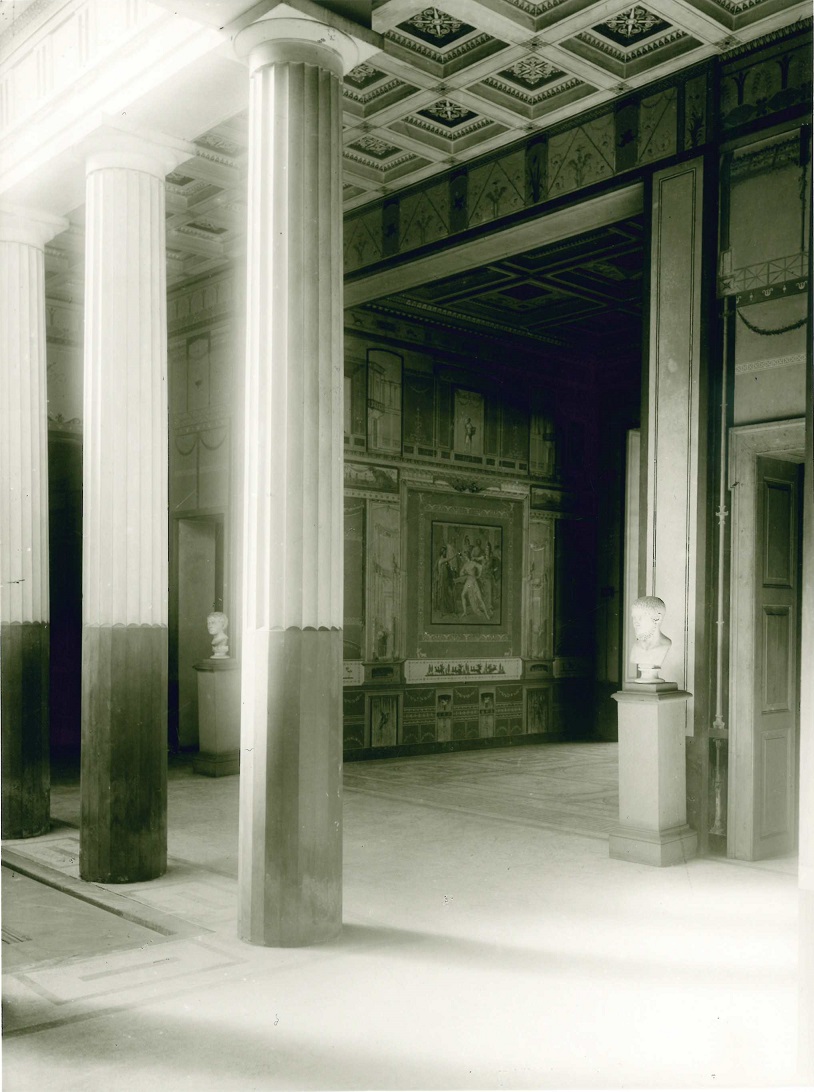
This pre-war-photo shows the Bust, together with another (today in the Antikensammlungen), standing in the Atrium at the entrance of the Tablinum.
To research her new-found treasure, Ms. Young contacted Sotheby’s. The auction house’s consultant researcher in Ancient Greek and Roman sculpture, Jörg Deterling, identified the subject of the Marble Bust as Drusus Germanicus and alerted Ms. Young that the work had gone missing from the Pompejanum decades ago. Before being looted, the Marble Bust had been displayed in the Atrium, at the entrance of the Tablinum that led to the Pompejanum. Although the exact path of the Marble Bust from Bavaria to Texas is unknown, it is safe to assume that it was looted either by an American serviceman who brought it back to the U.S. or by someone who eventually sold it to an American, likely during WWII or immediately after the end of the conflict.
According to Sotheby’s, Mr. Deterling has been “responsible for many returns, restitutions, and repatriations over the years, but his name has never appeared anywhere in connection with them.” Here, he once again played an instrumental role in the return of a valuable artwork by informing Ms. Young about the historical significance and provenance of her find.
IV. AMINEDDOLEH & ASSOCIATES HELPS MS. YOUNG RESTITUTE THE MARBLE BUST TO GERMANY

Drusus Germanicus on display at the San Antonio Museum of Art
After being informed of the Marble Bust’s provenance, Ms. Young worked with Amineddoleh & Associates to voluntarily transfer title to Bayerische Verwaltung der staatlichen Schlösser, Gärten und Seen (the Bavarian Administration of State-Owned Palaces, Gardens and Lakes), a government agency in Bavaria, Germany. As part of the restitution agreement, the Bavarian agency committed to loaning the Marble Bust to the San Antonio Museum of Art where it is expected to remain on view until its scheduled return to Germany in 2023.
Rather than sell the Roman bust on the antiquities market, where she could have made hundreds of thousands of dollars, our client instead chose to act ethically and return the bust to its rightful home. We worked with Ms. Young to communicate with German authorities, negotiate the transfer of title, ensure proper acknowledgement of Ms. Young’s actions, and request the work’s temporary display in Texas where its story and our client’s role could be further relayed. The Marble Bust’s journey is an extremely important story to tell. It reflects our passion for the past and collecting, the value of museums in providing access to heritage and knowledge, the unfortunate displacement and destruction of national and cultural heritage during conflict, and the hope that people and institutions will choose to act ethically and protect our shared heritage.
In fact, earlier this week the Museum of Fine Arts in Boston announced the return of a looted marble sculpture to Italy. As in the case with Drusus Germanicus, the object was likely stolen during WWII. The MFA had purchased the antiquity from a Swiss dealer in 1961 for $750. Other records of its whereabouts prior to the purchase are lost, but the dealer had represented that the object originated from Rome. Unfortunately, the MFA’s sculpture had suffered significant damage, such as the loss of facial features, including its nose, mouth and lower left cheek. The Boston museum worked with the Italian Ministry of Culture to effectuate the return of the looted antiquity.
At Amineddoleh & Associates LLC, we are proud to represent clients who value cultural heritage and consult us in matters involving provenance, authentication, ownership, and restitution. In doing so, they help ensure that cultural heritage is protected and safeguarded for current and future generations while being shared with as many people as possible. Thank you to The Art Newspaper for sharing details about this story HERE.
by Amineddoleh & Associates LLC | Apr 9, 2021 |

Nyan Cat
NFTs, or non-fungible tokens, have taken the art world by storm during the last month. With these works raking in millions of dollars in sales, collectors are eyeing digital art and collectibles as viable investments. So what exactly are NFTs? They are crypto assets created by minting a digital file on a blockchain, which serves as an indelible record of ownership, authorship, and other attributes of an associated artwork. Once minted, NFTs can be bought and sold across a variety of platforms, with each subsequent transaction recorded on the blockchain, creating a provenance in real-time with each transaction. These digital files, or tokens, can be associated with both physical and digital art and offer many exciting benefits. For example, the near limitless flexibility in coding these tokens has allowed artists to ensure they receive a fraction of all future sales of an artwork, a remedy artists have been seeking for years and which is known as the Artist’s Resale Right (ARR). For these reasons, NFTs may be found for sale at more than just tech start-ups, and they are making their way into preeminent art institutions. Christie’s recently auctioned its first purely digital work (Beeple’s EVERYDAY-THE FIRST 5000 DAYS) with an accompanying NFT, shattering the record for a price paid for a digital work, with a stunning final hammer price of over $69 million.
Purchasers around the world are now competing to buy an unprecedented amount of digital artwork, memes, and GIFs minted as NFTs. This includes the famous Nyan Cat meme, which sold for nearly $600,000 in February 2021. In total, these sales have amounted to approximately $200,000,000 in the month of March 2021 alone, compared to $250,000 during the entire year of 2020. There is no limit to what can become an NFT; for example, a digital artwork based on Salvator Mundi (the painting controversially attributed to Leonardo da Vinci that shattered auction records when it sold for $450 million in 2017), called Salvator Metaversi, was recently turned into an NFT and placed on the market. It looks as though NFTs are here to stay, and some art market participants are hopeful that they will usher in a brave new era of digital and crypto-based art, helping the market recover from the pandemic-related recession.
Amineddoleh & Associates has been at the forefront of this burgeoning market, working on several cutting-edge matters involving NFTs. We have provided legal counsel to market leader NIFTY Gateway and MONAX, a digital contract management solution, which is launching a feature to wrap legal agreements around NFTs. Although NFTs present exciting new possibilities for artists and collectors, it is unclear how they will interact with existing legal regulations drafted with more traditional objects in mind. This is especially true of intellectual property (IP) law, including copyright and moral rights.
VARA Rights
 Intellectual property rights are divided into economic rights and moral rights. Economic rights seek to protect a content creator’s ability to generate revenue based on their creations. For example, a publisher may be prohibited from selling copies of an author’s book without a license, thus depriving the author of revenue he or she is entitled to under copyright law. Moral rights seek to protect the intrinsic aspects of an artist’s creation and are more closely associated with honor and integrity rather than profit. For example, the French Supreme Court ruled in favor of director John Huston’s heirs, who argued that airing a colorized version of the classic silver screen film “The Asphalt Jungle” violated Huston’s moral rights. See Consorts John Huston vs Turner Entertainment Co., Cass., Ch. Civ. 1, May 28, 1991, n°89-19.522, n°89-19.725. In the United States, economic rights are protected by the Constitution and the Copyright Act, while moral rights are protected by the Visual Artists Rights Act (VARA), an act that was only passed in 1990. VARA solely applies to works of visual art and includes the following moral rights for artists: (1) the right to claim authorship of a work they created; (2) the right to disclaim authorship for a work they did not create; (3) the right to prevent the use of their name on any work that has been distorted, mutilated, or modified in a way that is prejudicial to the artist’s honor or reputation; and (4) the right to prevent the distortion, mutilation, or modification of a work that would prejudice the artist’s honor or reputation.
Intellectual property rights are divided into economic rights and moral rights. Economic rights seek to protect a content creator’s ability to generate revenue based on their creations. For example, a publisher may be prohibited from selling copies of an author’s book without a license, thus depriving the author of revenue he or she is entitled to under copyright law. Moral rights seek to protect the intrinsic aspects of an artist’s creation and are more closely associated with honor and integrity rather than profit. For example, the French Supreme Court ruled in favor of director John Huston’s heirs, who argued that airing a colorized version of the classic silver screen film “The Asphalt Jungle” violated Huston’s moral rights. See Consorts John Huston vs Turner Entertainment Co., Cass., Ch. Civ. 1, May 28, 1991, n°89-19.522, n°89-19.725. In the United States, economic rights are protected by the Constitution and the Copyright Act, while moral rights are protected by the Visual Artists Rights Act (VARA), an act that was only passed in 1990. VARA solely applies to works of visual art and includes the following moral rights for artists: (1) the right to claim authorship of a work they created; (2) the right to disclaim authorship for a work they did not create; (3) the right to prevent the use of their name on any work that has been distorted, mutilated, or modified in a way that is prejudicial to the artist’s honor or reputation; and (4) the right to prevent the distortion, mutilation, or modification of a work that would prejudice the artist’s honor or reputation.
One can imagine how NFTs may help enforce an artist’s economic rights: providing a record of ownership and the opportunity to attach specially contracted rights and obligations into the token (such as royalty rates) could make enforcement more efficient. However, it is less clear how NFTs will facilitate the enforcement of moral rights. In particular, the ability for NFTs to serve as incontrovertible proof of authorship, a chief benefit of NFTs, appears to be incompatible with rights allowing for conditional disavowal of an artist’s work.
Conventional VARA Rights Application
The third and fourth VARA rights, providing for the disavowal of a work that has been distorted, mutilated, or modified in a way that is prejudicial to the artist’s honor or reputation and for the prevention of such treatment, are sometimes the source of controversial litigation. In the US, moral rights are often seen as competing with traditional norms in property law, especially a subsequent owner’s ability to control his or her own property. Courts often face difficulty balancing intangible artists’ rights against real-world property rights, which has produced surprising results. Just as importantly, the art market is free to render its own decision concerning authorship and value, regardless of what a court of law might determine. The following examples illustrate how moral rights can be a double-edged sword in litigation.
Cady Noland, Log Cabin

Cady Noland, Log Cabin
Photo courtesy of Artnet
Celebrated American artist Cady Noland initiated a string of lawsuits against a collector and German gallery, most recently alleging that her rights under VARA were violated in a matter evoking a modern ship of Theseus. See Noland v. Janssen, No. 17-CV-5452 (JPO), 2020 U.S. Dist. LEXIS 95454 (S.D.N.Y. June 1, 2020). The work in question, Log Cabin, is a facade of a traditional log cabin created using pre-cut lumber ordered from a manufacturer in Montana. In 1955, the work’s then owner, Wilhelm Schürmann, loaned the work to a German museum, where it was displayed outdoors. Years later, several pieces of lumber began to rot and were replaced by conservators using lumber sourced from the same Montana manufacturer. Schürmann would go on to sell the work to Ohio collector Scott Mueller for $1.4 million, who had the foresight to include a buy-back option in the event the work was disavowed. Noland had already achieved some notoriety for disavowing works, which proved to be well-earned when she disavowed Log Cabin in a hand-written fax after learning of the conservation measures.
As one might expect when tempers run as high as sale prices, litigation ensued. Mueller sued the gallery for failing to return the purchase price, and the case was dismissed. See Mueller v. Michael Janssen Gallery PTE. Ltd., 225 F. Supp. 3d 201 (S.D.N.Y. 2016). But then Noland initiated a lawsuit of her own alleging the work infringed upon her copyright. Noland was granted leave to amend her complaint twice, with VARA violations added to her final amended complaint, but the litigation was ultimately dismissed. The judge concluded that Log Cabin was not entitled to copyright protection, and therefore not entitled to protections under VARA; and that in any case, any alleged violation occurred outside the United States. However, the case is just as notable for what it did not decide; namely, whether the unauthorized conservation of Log Cabin constituted a distortion, mutilation, or modification prejudicial to Noland’s honor as an artist. The absence of an answer has led some to question where the line might be drawn and may inspire future artists to make novel arguments along similar lines. As of 2020, Noland’s attorney was considering an appeal.
Richard Prince & Ivanka Trump
Appropriation artist Richard Prince, who has infamously tested the limits of copyright law on several occasions, ironically chose to exercise his VARA rights when he disavowed a work he sold to Ivanka Trump, apparently for political reasons. In a 2017 tweetreading, “This is not my work. I did not make it. I deny. I denounce. This fake art.” Prince publicly disavowed a work featuring his comment on one of Ivanka’s Instagram posts as part of his series “New Portraits.” The tweet followed a series of public statements criticizing Ivanka’s father, then presidential candidate, Donald Trump. The language of the tweet also appears to mimic Trump’s staccato speaking style and reference to “fake” claims. It is not clear whether the tweet would have become the subject of litigation, as Prince later confirmed in an interview that he voluntarily returned the $36,000 he initially received for the piece. Unfortunately, this leaves questions unanswered about under which conditions an artist may disavow an artwork and a disavowal’s effect on the market. In the absence of litigation, Prince’s actions set a non-legal precedent that an artist may disavow a work for political reasons if he or she has the cash on hand to reimburse the purchase price. In the end, Prince may have only increased the value of the work, still held by Ivanka, and whose creation by the artist is well-documented on Instagram.
5Pointz and Aerosol Art

5Pointz murals. Photo Pelle Sten, via Flickr.
Perhaps the most famous case involving the application of VARA involves graffiti mecca, 5Pointz. The Second Circuit Court of Appeals sent shockwaves through the world of copyright when it upheld a staggering $6.75 million damages award based on VARA violations for temporary works of street art. See Castillo v. G&M Realty L.P., 950 F.3d 155 (2d Cir. 2020). An abandoned warehouse in Queens was transformed into a graffiti mecca colloquially referred to as 5Pointz, a place where some of the city’s most notable (or notorious) street artists vied to make their own contributions to its decorated halls. The building’s owner, Gerald Wolkoff, initially welcomed their attention, and allowed artists to paint the walls under the direction of Jonathan Cohen, a graffiti artist known as Meres One, serving in a curatorial role. The matter was taken to court when Wolkoff wanted to take advantage of rising real estate prices and demolish the building to make way for condominiums. The artists, led by Cohen, protested the destruction, arguing that their works had achieved “recognized stature,” warranting protection under VARA. Then in 2013, while litigation was still pending, Wolkoff whitewashed the entire warehouse under the cover of night.
In 2018, Brooklyn Supreme Court Judge Frederick Block awarded the maximum statutory penalty under VARA, $150,000 per artwork, totaling nearly $7 million in damages. See Cohen v. G&M Realty L.P., 320 F. Supp. 3d 421 (E.D.N.Y. 2018).The 32-page decision was precedential in several ways. First, Judge Block vindicated street artists everywhere when he determined that these artworks had achieved a level of stature meriting copyright protection; in his analysis, he looked beyond the conventional art world for a group that venerated these works, and in doing so, opened the door for a dearth of unconventional art to receive legal protection. Perhaps most notably, the case was under close observation for its potential to establish a precedent for damages under VARA. Clearly influenced by Wolkoff’s surreptitious behavior, Judge Block’s decision to award the maximum penalty was still shocking. The case would work its way up the appellate ladder until finally being rejected for certiorari by the United States Supreme Court in 2020. The case now signals that VARA rights are not to be treated lightly and foretells the dire consequences that can result from a violation.
The above-mentioned disputes illustrate that moral rights cases are complex, and NFTs could further muddy the waters for judges unaccustomed to the peculiarities of the art market and crypto assets. At the moment, there is nothing preventing unscrupulous actors from minting NFTs of works and selling them as their own despite lack of good title, ownership, or IP rights. For instance, a so-called “market disruptor,” GlobalArtMuseum, carried out a “digital art heist” by creating NFTs of famous works held in top-tier museums, such as the Rijksmuseum. GlobalArtMuseum then placed the NFTs for sale on popular marketplace OpenSea. This was a publicity stunt, but nevertheless left the museums rattled. Similar acts could violate copyright law. Tracking down those responsible could prove complicated and the enforcement of legal remedies is not necessarily guaranteed. Online platforms operate across borders, so it may be difficult to determine which law applies, and countless transactions may occur in the meantime. Moreover, some lawyers are not convinced that NFTs qualify for copyright protection because it is an open question as to whether they are original works of authorship. Artists will need to keep this possibility in mind when minting NFTs and exerting moral and economic rights.
Another issue with NFTs pertains to ownership and the integrity of works. A self-proclaimed group of “tech and art enthusiasts” recently purchased a Banksy print, minted it as an NFT – and then burned the original. The group circulated the video of the burning print on YouTube, stating that “by removing the physical piece from existence and only having the NFT, [this]… will ensure that no one can alter the piece and it is the true piece that exists in the world.” This certainly raises the question of authenticity for NFTs when a physical work is also present; which is the original? If the physical work is mutilated or destroyed, but the NFT survives, how will this affect the damages an artist is entitled to receive under VARA? Hypothetically, Banksy could have a viable cause of action under VARA against the group, as his work is certainly of a recognized stature, but no court has ruled on the matter yet.
Conclusion
What does the NFT frenzy tell us? Art is constantly evolving, and the market is quick to adapt once supply and demand for new forms are established. NFTs are operating as a herald of such change, albeit at a much faster pace than anticipated. But this means that current legal and regulatory frameworks are not equipped to deal with some of the issues related to NFTs, including economic and moral rights. Artists entering the world of NFTs should be aware of these issues and consult legal professionals familiar with the pitfalls in this field. Amineddoleh & Associates is proud to represent and advise artists and collectors creating, selling, and purchasing all types of artwork and collectibles – NFTs included.
by Amineddoleh & Associates LLC | Mar 22, 2021 |
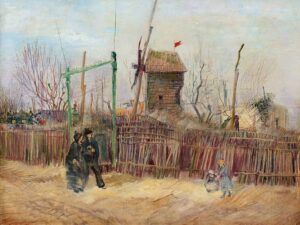 A rarely seen painting by Vincent van Gogh will be auctioned at Sotheby’s in Paris later this week. It is an appropriate venue for the sale of the work that depicts the Moulin de la Galette, a historic windmill in the Montmartre district of Paris. The work had been held within a French family’s private collection for over a century, and it is expected to fetch close to $10 million. Before it reaches the auction block, the work has already traveled to Amsterdam and Hong Kong where it went on public display.
A rarely seen painting by Vincent van Gogh will be auctioned at Sotheby’s in Paris later this week. It is an appropriate venue for the sale of the work that depicts the Moulin de la Galette, a historic windmill in the Montmartre district of Paris. The work had been held within a French family’s private collection for over a century, and it is expected to fetch close to $10 million. Before it reaches the auction block, the work has already traveled to Amsterdam and Hong Kong where it went on public display.
A perennial favorite of art lovers, Vincent van Gogh rose to great fame after his apparent suicide. His legacy was secured in large part thanks to the efforts of his sister-in-law Johanna Gezina van Gogh-Bonger, wife to his brother Theo. After Vincent’s death, his property passed to his younger brother. In turn, his brother passed to his property, including Vincent’s paintings and his correspondences to his wife. With no income and a child to feed, Johanna demonstrated a shrewd eye and a natural adeptness for managing her brother-in-law’s legacy, serving as art dealer, and promoting and caring for the works. Rather than simply sell works for the highest price, she made strategic donations to exhibitions to enhance the painter’s fame. In addition, she transcribed a Van Gogh family history by compiling and editing the brother’s correspondences. The publication of the letters helped spread the Romantic reputation of Vincent van Gogh as an emotional and suffering painter. Johanna played an important role in the artist’s legacy.
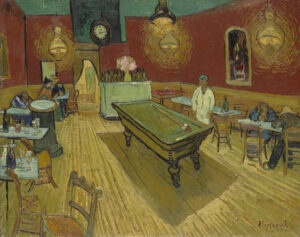 Keeping pace with the artist’s rising popularity, the value of Vincent van Gogh’s art rose dramatically decades after his death. Sales of his works through auction have broken records numerous times in the 1980s and the 1990s. Lawsuits concerning his works have made the news for decades now. Five years ago, the U.S. Supreme Court rejected the appeal of a man who sued Yale University as part of his bid to recover a $200 million van Gogh painting, The Night Café, from the institution. (The plaintiff alleged the painting was stolen from his family during the Russian Revolution; Yale has held the painting since 1961.) Only a few years earlier, the Supreme Court rejected another appeal seeking to divest actress Elizabeth Taylor of her van Gogh, View of the Asylum and Chapel at Saint-Remy, on the basis that a previous owner was coerced to sell the painting while fleeing Nazi Germany. With the values of the artist’s works in the millions, or even hundreds of millions of dollars, the stakes are high. Following these high-value ownership disputes, allegations of Nazi looting, and high-end forgery scandals, buyers are wise to complete due diligence prior to the acquisition of an artwork.
Keeping pace with the artist’s rising popularity, the value of Vincent van Gogh’s art rose dramatically decades after his death. Sales of his works through auction have broken records numerous times in the 1980s and the 1990s. Lawsuits concerning his works have made the news for decades now. Five years ago, the U.S. Supreme Court rejected the appeal of a man who sued Yale University as part of his bid to recover a $200 million van Gogh painting, The Night Café, from the institution. (The plaintiff alleged the painting was stolen from his family during the Russian Revolution; Yale has held the painting since 1961.) Only a few years earlier, the Supreme Court rejected another appeal seeking to divest actress Elizabeth Taylor of her van Gogh, View of the Asylum and Chapel at Saint-Remy, on the basis that a previous owner was coerced to sell the painting while fleeing Nazi Germany. With the values of the artist’s works in the millions, or even hundreds of millions of dollars, the stakes are high. Following these high-value ownership disputes, allegations of Nazi looting, and high-end forgery scandals, buyers are wise to complete due diligence prior to the acquisition of an artwork.
The painting for sale this month is recognized as one of van Gogh’s major works. The subject of the piece, the Moulin de la Galette, became popular during the 19th century for the brown bread it baked, which the windmill was later named after. As technology progressed to replace windmills, they became attractive tourist destinations for Parisians looking to enjoy a bucolic view amidst the urban landscape. The contrast between city and country clearly captured van Gogh’s attention, who began a series of works featuring the mill shortly after his arrival in Paris in 1887. Van Gogh was not the only artist inspired to capture its image; the windmill is featured in works by Pissarro, Utrillo, and in Renoir’s notable Bal du moulin de la Galette. Van Gogh’s rendition stands proudly among these works and has been featured in seven catalogues, although it has never been publicly exhibited—until now.
If you cannot make it to Paris, there are other ways to immerse yourself in van Gogh with the Van Gogh Experience in NYC this summer. This innovative exhibition uses 360º wall-sized projections to engage the viewer in van Gogh’s works from every angle. Similar versions of the exhibit can be found in many prominent cities across the country, including Los Angeles, Dallas, and Chicago. For an immersive experience that can be enjoyed from the comfort of home, fans might look to Loving Vincent, a 2017 movie depicted entirely in van Gogh’s signature painterly style. For a more conventional viewing, fans can turn to At Eternity’s Gate, a 2018 film for which Willem Dafoe received an Academy nomination for best actor based on his performance as van Gogh. And for purists, van Gogh’s most famous work, Starry Night, remains on permeant display at the Museum of Modern Art in NYC.
Amineddoleh & Associates LLC has previously worked with a well-known international collector to assist in the authentication of a van Gogh work in his collection. Through this process, we have corresponded with the Van Gogh Museum, and collaborated with provenance investigators and forensic scientists. We continue working with experts to authenticate our clients’ collections or assist them with due diligence prior to a purchase.
by Amineddoleh & Associates LLC | Dec 23, 2020 |
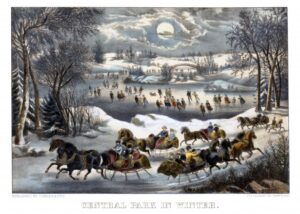
Season’s greetings from all of us at Amineddoleh & Associates!
Like so many of you, all of us at Amineddoleh & Associates missed meeting with our friends and colleagues this year, but we send you warm wishes for a happy and healthy holiday season and a prosperous 2021. Although 2020 was a challenging year, it was also a banner year for the firm. In addition to securing a win for the Greek government in a landmark litigation against Sotheby’s auction house and its consignors in Barnet et. al v. Ministry of Culture and Sports of Hellenic Republic, we were also retained by the Republic of Italy in another cultural heritage dispute, Safani v. Republic of Italy. In this case, we are representing Italy in a lawsuit involving an antiquity excavated from the Roman Forum and potentially stolen from a national museum.
In addition to these high-profile representations, we continue to work with clients on a variety of intellectual property, art and cultural heritage, and estate matters. Below are some of the highlights of this year:
- Working with a film producer to secure a deal with Showtime Network and providing legal guidance for a contract with Miramax;
- Assisting a client in the sale of a previously undiscovered “sleeper” work (a previously misattributed painting);
- Representing a number of artists and designers in intellectual property disputes;
- Assisting collectors in the acquisition and authentication of works;
- Successfully securing trademarks for foreign and domestic clients;
- Resolving disputes between auction houses, collectors, and galleries.
2020 was also an exciting year for our team in terms of professional achievements and accolades. Leila was honored to speak at the Frick Collection on the importance of provenance. During the lockdown, she participated in a podcast series for the Victoria & Albert Museum, and she also discussed art and heritage issues for various educational institutions, including the American Bar Association, American University, Wake Forest University School of Law, and Christie’s Education. In addition, she served as a cultural heritage law expert on Turkish television channel TRT World, published a law review article about the political dimensions of cultural heritage, and appeared in a number of news sources, including the LA Times, ABC News, Artnet, and the International Consortium of Investigative Journalists. Leila also contributed a chapter, addressing the legal implications of art and antiquities’ provenance, to the recently-published volume Provenance Research Today: Principles, Practice, Problems.
Claudia completed a year-long legal internship at Constantine Cannon in London, where she worked on a cultural heritage legislative drafting project and developed multiple proposals for the Global Legal Hackathon with teams from the UK, Italy, US, and South Africa. She has multiple journal articles scheduled for publication in 2021, and she will serve as a panelist at the TIAMSA Conference in July 2021, discussing the role of deaccession in museum practice and its overlap with diversity initiatives.
We look forward to a productive year ahead and what are sure to be interesting developments in the field of intellectual property and art and cultural heritage law.
HAPPY HOLIDAYS!
by Amineddoleh & Associates LLC | Nov 20, 2020 |

Golden Coffin of Nedjemankh– looted from Egypt and sold with false provenance
The Victoria & Albert Museum in London is currently closed, but it continues to create and distribute valuable content examining issues related to art and heritage looting. Through Culture in Crisis, a program bringing together individuals and organizations with a shared interest in protecting cultural heritage, the museum is actively engaging with heritage professionals to provide insights into the dangers facing our shared history. One tool for raising awareness of these issues is the Culture in Crisis Podcast.
Season Two, Fighting the Illicit Trade, is comprised of interviews with international experts working to prevent the illegal trade of cultural heritage– each person fighting a battle to rescue cultural heritage at a different stage of its underground journey. The series examines the actions taken at the object’s source, through transit, and upon arrival at its destination. As stated by Culture in Crisis, “The theft and sale of cultural property robs communities of their past, present and future. It lines the pockets of international criminal networks and has been shown to directly finance terrorism. Through this series we hope to highlight valuable initiatives working to prevent the illicit trade and gather recommendations on how to build on these efforts in the future.”
Our founder, Leila A. Amineddoleh, is interviewed in Episode 7, “You’ve Gotta Have (Good) Faith.” She offers a legal perspective about heritage looting, discussing legal cases, provenance (including false provenances), good faith purchases, and the due diligence involved in purchasing antiquities. Read more about the series and listen to the informative interviews here.









 Intellectual property rights are divided into economic rights and moral rights. Economic rights seek to protect a content creator’s ability to generate revenue based on their creations. For example, a publisher may be prohibited from selling copies of an author’s book without a license, thus depriving the author of revenue he or she is entitled to under copyright law. Moral rights seek to protect the intrinsic aspects of an artist’s creation and are more closely associated with honor and integrity rather than profit. For example, the French Supreme Court
Intellectual property rights are divided into economic rights and moral rights. Economic rights seek to protect a content creator’s ability to generate revenue based on their creations. For example, a publisher may be prohibited from selling copies of an author’s book without a license, thus depriving the author of revenue he or she is entitled to under copyright law. Moral rights seek to protect the intrinsic aspects of an artist’s creation and are more closely associated with honor and integrity rather than profit. For example, the French Supreme Court 

 A rarely seen painting by Vincent van Gogh will be auctioned at
A rarely seen painting by Vincent van Gogh will be auctioned at  Keeping pace with the artist’s rising popularity, the value of Vincent van Gogh’s art rose dramatically decades after his death. Sales of his works through auction have broken records numerous times in the 1980s and the 1990s. Lawsuits concerning his works have made the news for decades now. Five years ago, the U.S. Supreme Court
Keeping pace with the artist’s rising popularity, the value of Vincent van Gogh’s art rose dramatically decades after his death. Sales of his works through auction have broken records numerous times in the 1980s and the 1990s. Lawsuits concerning his works have made the news for decades now. Five years ago, the U.S. Supreme Court 
